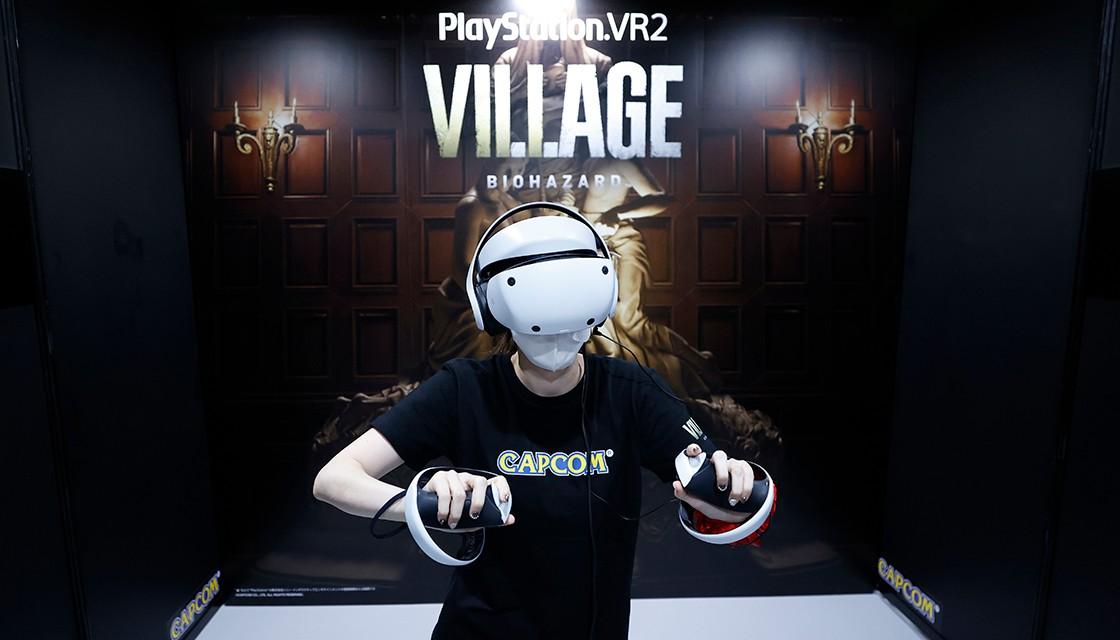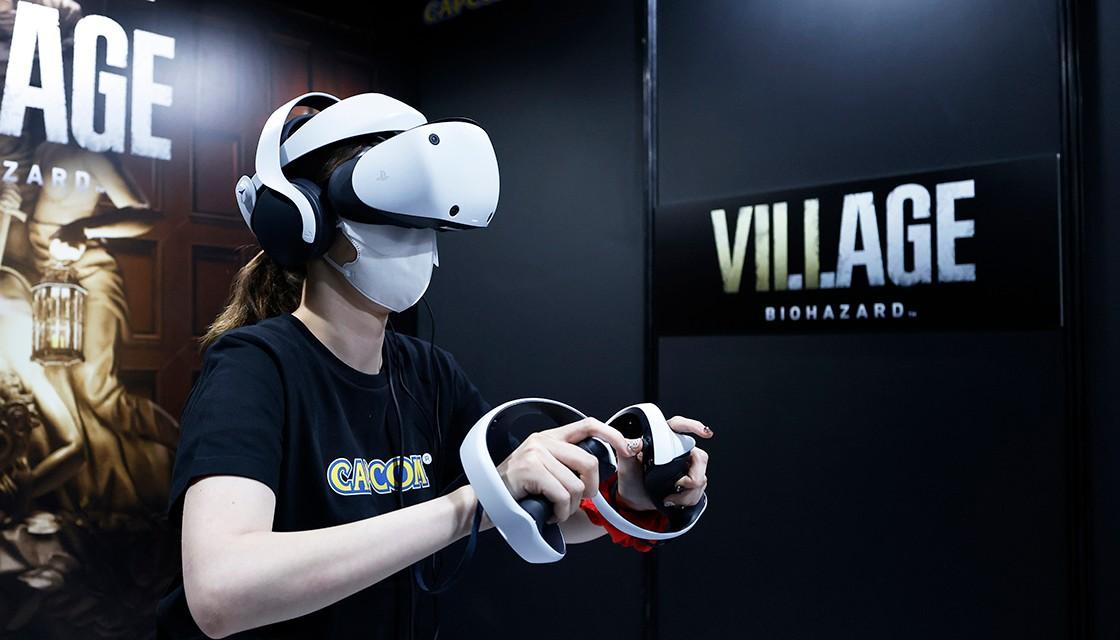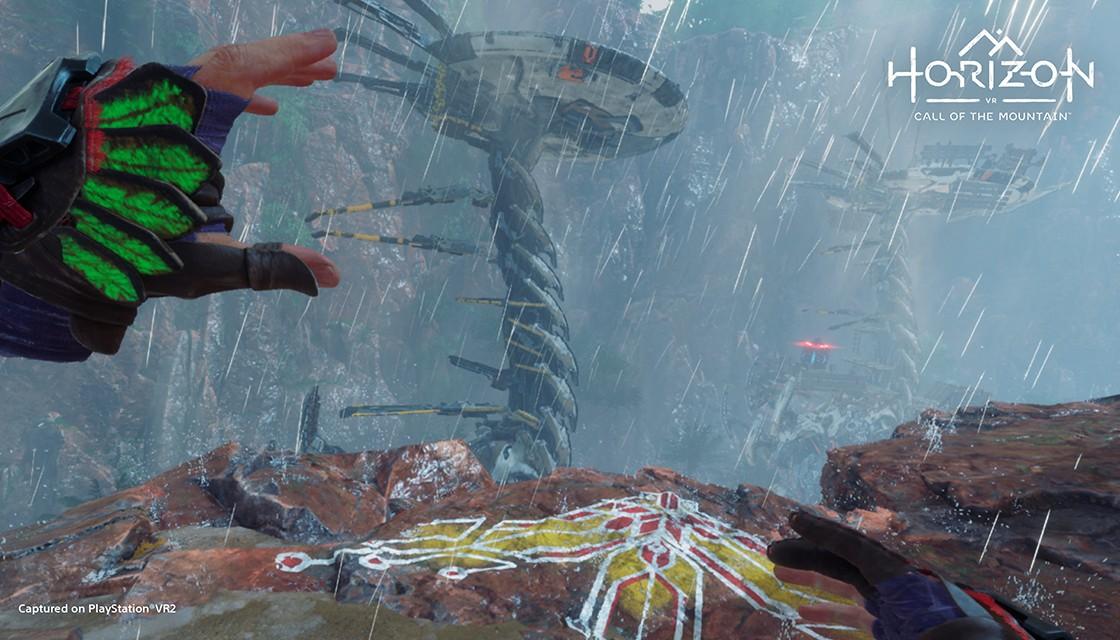REVIEW: The term "gamechanger" is bandied around a lot with technology.
Certainly when PlayStation's VR helmet launched back in 2016 with its eye-opening price of $700 the term was hard to swallow given how it "gamechanged" what was left in your wallet.
But compared to PSVR2, PSVR seems like a lifetime away both in what's on screen and what's in the box.
The original headset came with a large amount of cables, boxes and wires that proved to be a real headache to set up and a roadblock to the ease of setting up and getting gaming.
However, PSVR2 has ditched all of that with the gear simply consisting of a cabled headset, a pair of Sense controllers, some earbuds and a USB-C to charge the controllers. In some ways, you may feel cheated given you're laying down $1000 to get in on the next generation of virtual reality.
Setting up
It's shocking how easy this is. Simply plug in the headset to the front of your console and you're good to go. That's it - no need to spend time plugging in cables into boxes and looking for power outlets. The ease with which PlayStation has made the set so accessible is to be commended.
The rest of the setup is done in-screen via the helmet. After powering up on the headset itself, which shakes to life with a satisfying wobble once it's on, a series of instructions helps you pair the sense controllers and then maps out a playing area for you. The mapping is intuitive, scanning the area you're choosing to play in and covering the contours of any furniture, dips and bumps and people to ensure you have the best uninterrupted play.

Whereas the previous headset enveloped you in darkness during setup, the latest one uses mapping technology and a view of what's around you to create a gaming arena - and still allows you to see everything around you while it does so.
Playstyles include Sitting, Standing and Roomscale. Sitting creates a temporary cone around you like some kind of futuristic prison but means you're not in danger of whacking any pets or partners without realising.

The headset
Sleeker in design and more comfortable, the PSVR2 doesn't feel like it's squeezing your head while you wear it, unlike its predecessor. Granted, it's not revolutionised the design with more or less the same look, but it feels more lightweight than previously and can happily sit on your face for a few hours at a time.
With two 2000x2040 OLED panels within and a refresh rate to help deal with tricky motion sickness, the technology also utilises what's called foveated rendering.

Basically that means the virtual reality headset can dynamically reduce the picture quality in your peripheral vision and works on providing your eyeballs wherever they're looking with the best picture. It does mean occasionally the side vision appears blurred, but rest assured when you look directly at what's on your side, the clarity is concise.
Your vision is also made sharper thanks to the adjustable interpupillary distance (IPD) for the lenses within the helmet, meaning you can tweak what you see like you're in an optician's chair. Adjustable by a dial on the device, it's easy to do and instantly changes what you see in-helmet.

The bad news
The real downside of the PSVR2 is the power usage in the controllers.
It somewhat sticks in my craw that while the headset stays wired up to the console itself with a generous cable that gives you more than enough space, the same can't be said - or indeed, done - for the Sense controllers.
Both of these need to be wired to charge, but there's only one socket on the front of the console to do it. That means you either have to power up each controller individually while you're playing non-VR games or have to invest in a docking bay charger.
It does sound like a first world problem, but given the fact the whole set is $1000 all up, adding in another $90 seems a bit harsh when it could have been included in the initial outlay - especially as the controllers themselves only last about four hours without needing a charge.
I'm not really sold on the headphones either. Fixed stereo earbuds nestle neatly on the headset but don't feel like they provide the best sound when compared to the Pulse headphones Sony launched with the PS5.
The plastic bar holding them feels flimsy and in truth, I'm not sure how they'd be replaced if they snapped or got broken.

The games
It's not breathless hyperbole to say some of the game choices are outstanding and immersive.
The big AAA title launch is Horizon VR - Call of the Mountain, a thrilling expansion for the popular Horizon: Zero Dawn series that puts you behind the bow of a disgraced Carja warrior.
It starts off with you being escorted on a river, as giant metallic creatures walk either side of you. As one of the game's largest creatures, a Tallneck walked past and above me, I found myself craning my neck to see its monstrous scale and visibly gasping as the creature stomped over me.
Climbing mountains as winds whistle around you, and wooden panels creak, the game borders on the vertiginous and you don't really want to look down - unless you want to marvel at the scope and scale of what the developers have done.
Adding to the thrills and making use of the haptic feedback is fighting which like the original game relies on you stringing a bow, and firing at machines as they attack. It takes some time to master but is adrenaline-filled and thrillingly immersive.
On the slightly more relaxed scale, Kayak VR: Mirage will give your arms and body a workout as you take a leisurely ride through various vistas, taking in the wildlife and also looking through crystal clear water at the aquatic life.
There's also a timed element to the game as well, which sees you competing - it's engaging stuff that makes you feel like you're having a workout while family members laugh at you flailing in your own front room.
Equally Star Wars: Tales from the Galaxy Edge gives an immersive Star Wars experience, using haptic feedback and adaptive triggers to grab and repair things as well as shoot in a galaxy far, far away.
With more than 20 games at launch (including No Man's Sky and Gran Turismo 7), there's enough to get started with, but it's to be hoped VR doesn't just become a gimmick for developers and is used to tell stories in a truly immersive way. It's disappointing none of the prior PSVR titles don't work on the new headset, but understandable that they need to be upscaled to work within the tech's new requirements.
All in all, it feels like PSVR2 is a good solid start for the new headset and the next stage of virtual reality. Experiences like Horizon VR show there's potential to be completely immersive and offer a gaming experience that's second to none - but frustratingly, issues like the power for the controllers hold PSVR2 back from truly changing the landscape.
Newshub was provided with a PSVR 2 set for this review, and early access to a raft of gaming titles.



